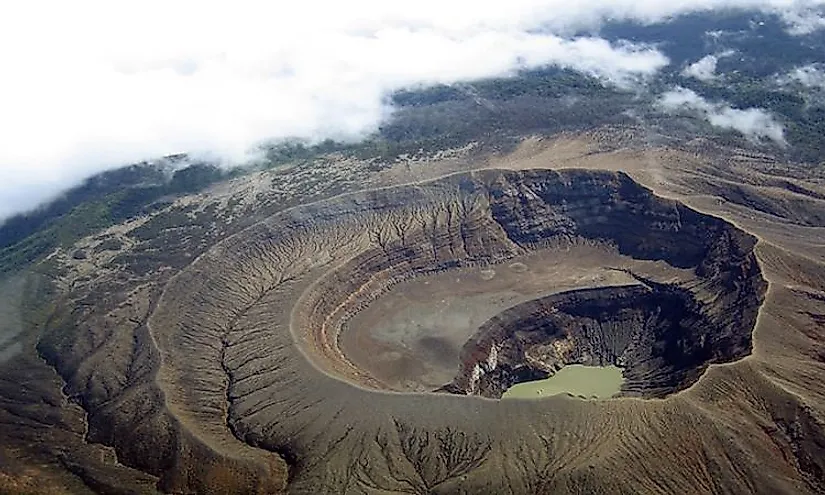Ecological Regions Of El Salvador

El Salvador is a small country in Central America bordering Guatemala and Honduras along the North Pacific Ocean. It a tropical country characterized by marked variations in topography and seasonal rainfall. The ecology of El Salvador mirrors that of its Central American neighbors such as Honduras, Nicaragua, and Guatemala. The country boasts abundant flora and fauna, some of which has been classified as either threatened or vulnerable.
Ecological Regions Of El Salvador
Central American Dry Forests
The Central American dry forests ecological region is classified under the Tropical and Subtropical Dry Broadleaf Forests Biome. This ecoregion is comprised of patches of dry forests native to the Latin American countries of El Salvador, Mexico, Guatemala, Honduras, Nicaragua and Costa Rica. The region has a tropical climate and annual rainfall averages between 1,000 and 2,000 mm. The region has a dry season of 5 to 8 months. The ecoregion is characterized by deciduous trees which form a canopy and evergreen trees. The deciduous trees are major members of the Leguminosae superfamily while the evergreen trees belong to the Rubiaceae family.
Plants in this ecoregion exhibit a high level of endemism and include Myrospermum and Crescentia alata. The region boasts a rich avifauna, including the endemic giant wren, blue tailed hummingbird, and the white-bellied chachalaca. The endangered spider monkey and numerous cat species roam in the ecoregion. The ecoregion is listed as Critically Endangered. The government of El Salvador faces legislation, institutional, and financial challenges to effectively protect the region’s flora and fauna. The Deininger National Park in El Salvador is the only reserve with dry forest.
Central American Montane Forests
The Central American Montane forests ecoregion is classified in the Tropical and Subtropical Moist Broadleaf Forests Biome. This ecoregion is indigenous to El Salvador along with Mexico, Honduras, Nicaragua, and Guatemala. The ecoregion is comprised of patchy forests situated on the slopes of El Salvador’s highest and isolated peaks. The temperate climate of the region enables various species of oak, conifer and maple trees to thrive. Annual rainfall in the peaks is between 2000 and 4000 mm. The ecoregion is home to the endemic Horned Guan and the resplendent quetzal, along with numerous migratory bird species. The high elevations in El Salvador are protected in small areas, unlikely to adequately conserve the region’s biodiversity. The area is subsequently listed as Vulnerable.
Central American Pine And Oak Forests
The Central American pine and oak forest are classified in the Tropical and Subtropical Coniferous Forests Biome. The ecoregion stretches through El Salvador, Mexico, Nicaragua, Honduras, and Guatemala. In regards to elevation, the ecoregion lies below 1,800 meters down to 600 meters. The ecoregion is characterized by numerous tree species of pines, oaks, cypress, and fir.
The region provides habitat for over 100 mammals including the Central American spider monkey, jaguar, puma, cacomistle, bats, and the ocelot. The area boasts a rich avifauna including the near-threatened black-capped siskin and the Santa Barbara screech-owl. The Azure-rumped Tanager and the Golden-cheeked Warbler are threatened bird species that inhabit the ecoregion.
Population pressure in this ecoregion continues to impact negatively on its sustainability. Deforestation has cleared primary forest cover in the region. The Montecristo National Park is the largest of the conservation efforts in this ecoregion.
Fonseca Chiapas
The Fonseca Chiapas ecoregion is classified in the Freshwater Tropical and Subtropical Coastal Rivers Biome. The ecoregion covers El Salvador, Nicaragua, Honduras, Mexico, and Guatemala. The El Salvador Rivers of Güija, Ilopango, Coatepeque and Laguna de Olomega are located in this ecoregion.
The tropical climate in the region is comprised of a rainy season between May and October and a wet season from November to April. Rainfall falls between 1400 and 1800 mm annually. Mangroves are the dominant vegetation along the coastline. The ecoregion is home to the threatened C. trimaculatu and Cichlasoma guija fish species. Endemic fish species in this ecoregion include the Tonala catfish, Oaxaca cichlid, blackthroat cichlid, and the Riverine stargaze. Pollution is emerging as a threat to the marine life of this ecoregion.
Threats To El Salvador's Ecosystems
The Gulf of Fonseca mangroves, Nicaragua Chiapas and the Northern Dry Pacific Coast mangroves are other ecological regions in El Salvador. A high population growth rate in El Salvador is one of the biggest threats to the country’s ecology. Deforestation and extensive agricultural practices are increasing in line with population growth. Established protected areas in the country are insufficient to adequately protect the nation’s biodiversity
Ecological Regions Of El Salvador
| Ecological Regions of El Salvador | Biome |
| Central American dry forests | Tropical and Subtropical Dry Broadleaf Forests |
| Central American montane forests | Tropical and Subtropical Moist Broadleaf Forests |
| Central American pine and oak forests | Tropical and Subtropical Coniferous Forests |
| Fonseca Chiapas | Freshwater Tropical and Subtropical Coastal Rivers |
| Gulf of Fonseca mangroves | Mangroves |
| Nicaragua Chiapas | Tropical East Pacific Marine |
| Northern Dry Pacific Coast mangroves | Mangroves |











